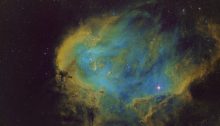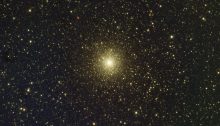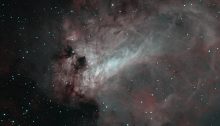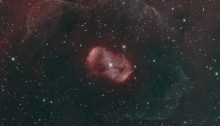
The telescope mount is effectively the heart of the telescope assembly as it provides the necessary support for the optical tube assembly (OTA) as well as the ability to rotate to point the OTA in the required direction. The addition of motors into the axis enables the telescope to track objects across the sky and the addition of computerised pointing (Go-To) capabilities as well as the ability to incorporate guiding into the operation of the mount. Higher end mounts will also include absolute encorders which enable to mount to precisely track the position and rotation of the motors which greatly increases the Goto and tracking performance of these mounts, however currently it does increase the cost significiantly.
There are two main types of telescope mounts – alt-az and equatorial.

The alt-az (altitude-azimuth) mount is the simplest form of telescope mount which just provides rotation in altitude (up-down) and azimuth (left right) such as a camera tripod or the stands for binoculars at tourist sites.

The fork mount takes the basic alt-az mount and beefs it up to be able to support additional weight and incorporate the motors to drive the movement of the telescope to allow tracking and goto operation

The introduction of the Dobsonian alt-az mount in 1965 by John Dobson revolutionised the amateur astronomy market. A simple wood frame sits on a rotating base. the use of modern teflon pads as bearings simplified the construction even further. this arrangement allows large telescopes, typically newtonian relectors, to be mounted on a simple portable base.
While the alt-azimuth mount is easy to set up and works well for visual use it does have drawbacks, mainly that both axis of rotation have to be used to track an object across the sky, which can be difficult on a manually operated mount. Second, as objects appear to rotate around the celestial poles as they move across the night sky they will rotate in the field of view of an instument (Camera or telescope) on an al-az mount. If you are trying to take long exposures to take pictures of the night sky, which many of us do these days, that rotation will cause streaking and smearing in the photo. The way to prevent this is to use an Equatorial mount.
In an equatorial mount, the axis of the azimuth rotation is tip over so that instead of pointing straight up, it points at the celestial pole – North or South depending on which hemisphere you are in. For those in the northern hemisphere this is simplified as the North Star is situated very close to the actual North Celestial Pole (NCP). For those of us in the Southern hemisphere however things are not so simple as there is no corresponding South Star close to the South Celestial Pole (SCP)
When the axis is tilted over in this way the rotation of the mount in this axis mimics the rotation of the stars and the terminology changes accordingly – Azimuth becomes Right Ascension (RA) and the altitude becomes Declination (Dec). The benefit is that the mount only needs to move in one axis – Right Ascension – in order to track a point in the night sky and, as the orientation of the OTA rotates with the tracking there is no apparent rotation of the field of view.

An alt-az mount such as a fork mount can be converted to an equatorial mount by tipping the axis over, with many manufacturers facilitating this by aftermarket wedges which will sit between the fork assembly and the tripod/pier. The wedges typically include adjustments for the angle of tip to allow for adjusting to the latitude at which the user lives as the latitude determines the elevation (altitude) of the pole in the night sky. Fork mounts on a wedge is stil a popular design for man observatories because of the amount of weight they can support.

A German Equatorial Mount (GEM) is a mounting arrangement which simplifies the alignment of the RA axis with the celestial pole. Mounted on either a tripod or pier, the mount head incorporates azimuth and and altitude adjustments for the RA axis so that it can be accurately aligned with the pole. The inclusion of a polar scope, or more recently polar cameras, assists in getting this alignment as accurate as possible. Unfortunately, because of the way that GEM’s are mounted with all the weight on one side of the main support bearing, these bearings need to be quite substantial in order to support the weight that the mount is rated to hold.

Prior to the development of the GEM, in many older observatories, the RA axis was a bar supported by a bearing at either end, with the telescope mounted in the middle. This mounting arrangment has recently been re-introduced by Ioptron with their Centre Equatorial Mount (CEM) range. As the RA axi shaft is supported on both sides, the bearings do not need to be as substantial as in a traditional GEM design, also this support arrangement brings the centre of balance back over the centre of the support tripod (or pier) and these two combined means more weight can be supported in a smaller mount.
My Mounts
Skywatcher Star Adventurer
Skywatcher HEQ5
Skywatcher EQ8
Ioptron CEM60
Related Posts









